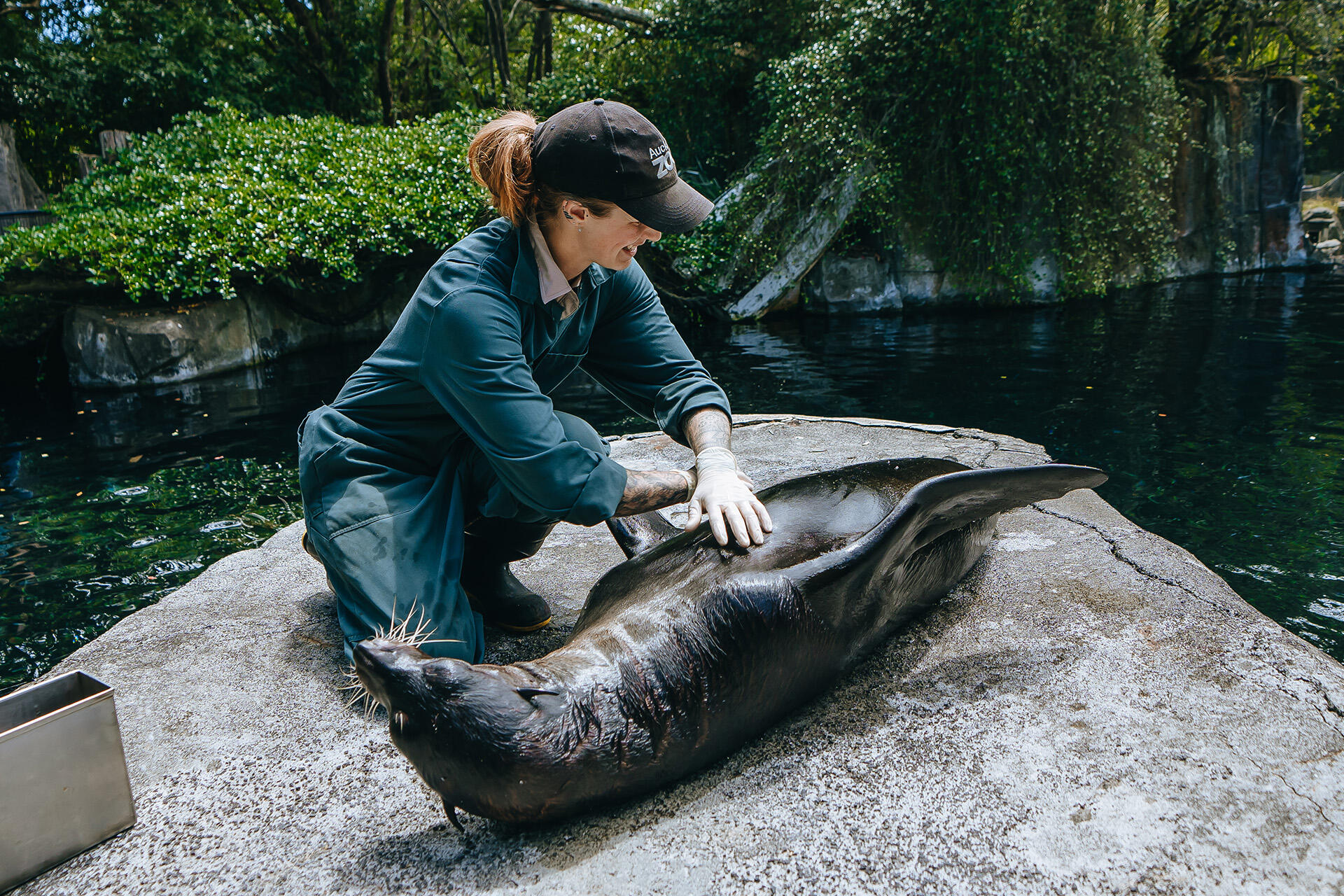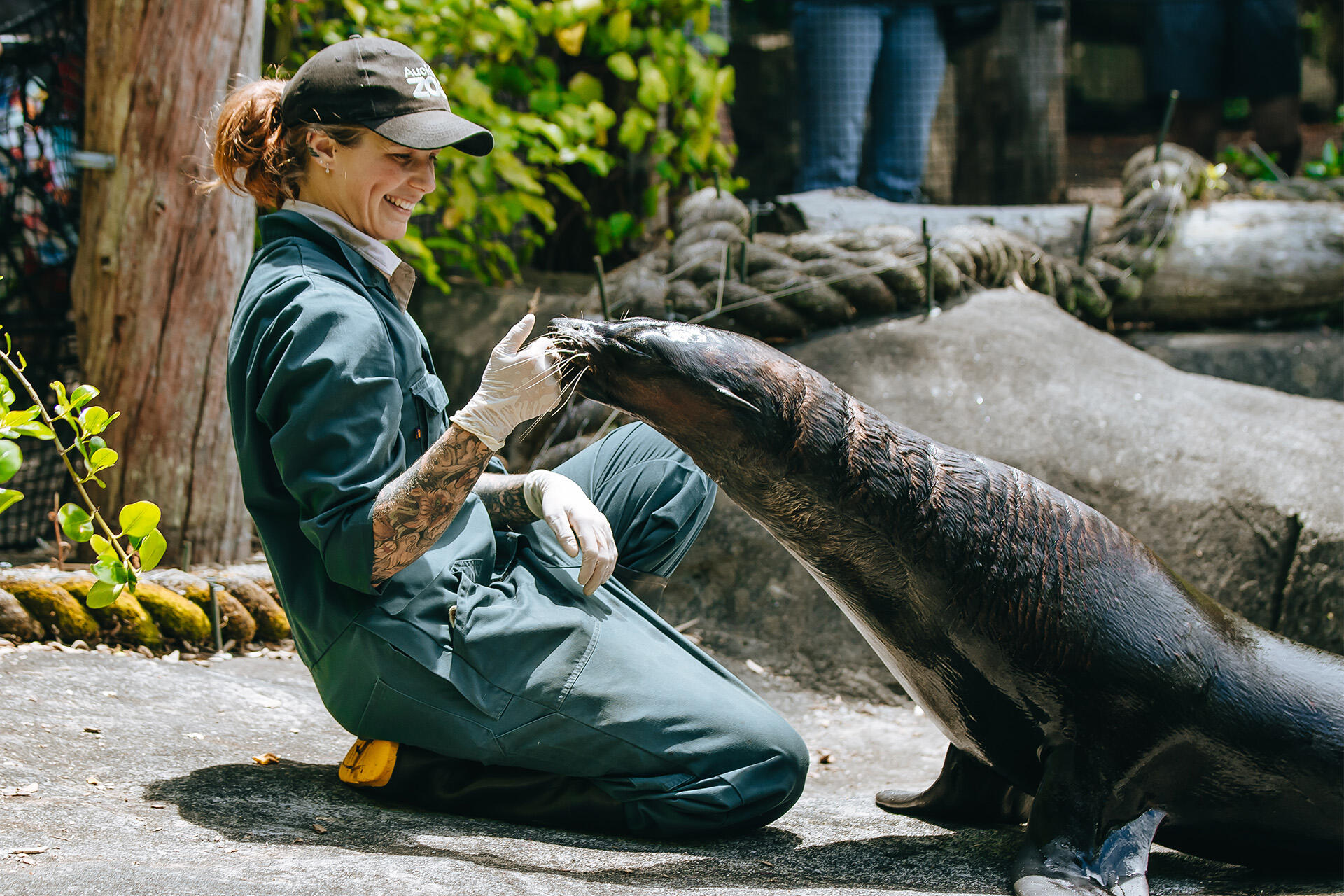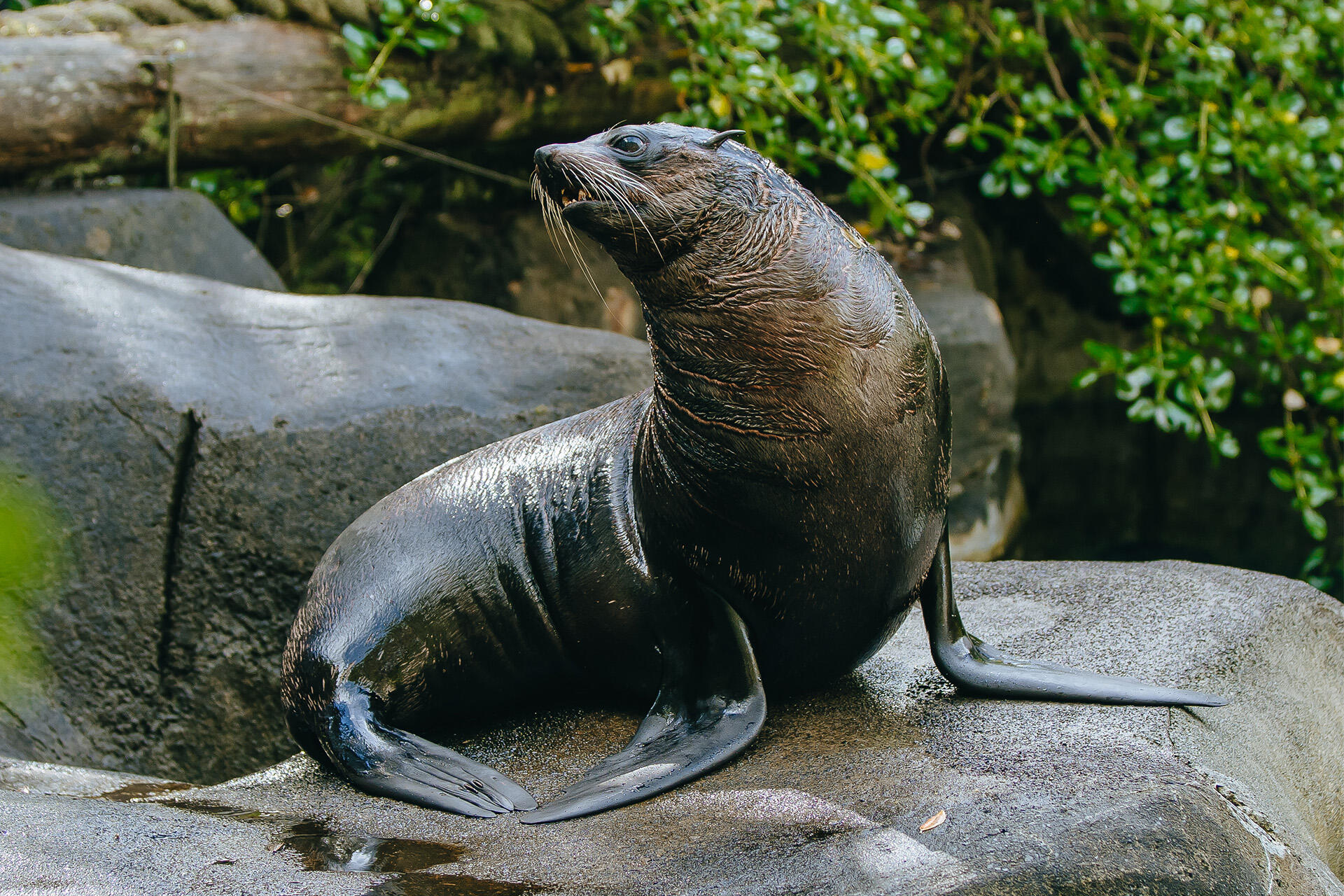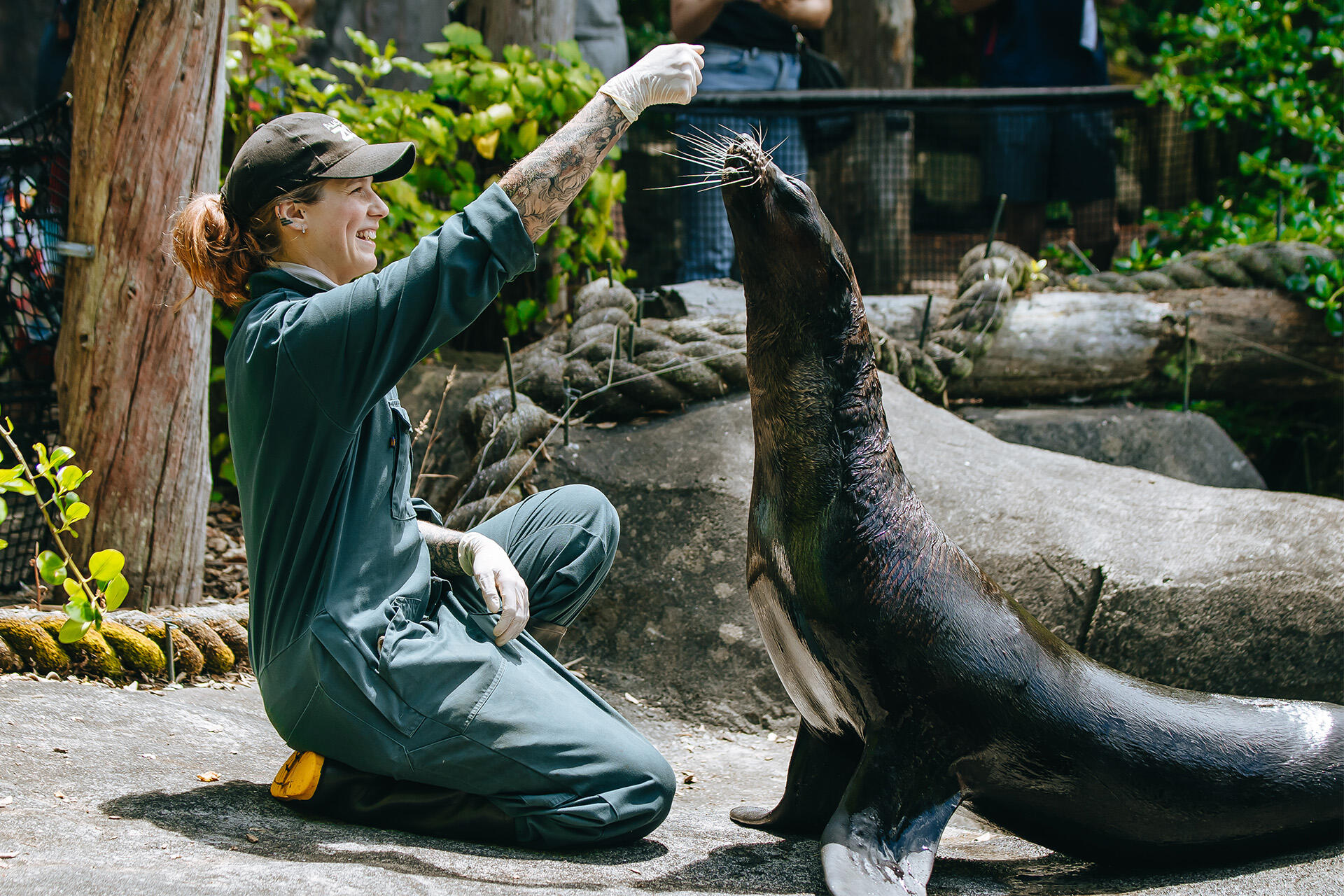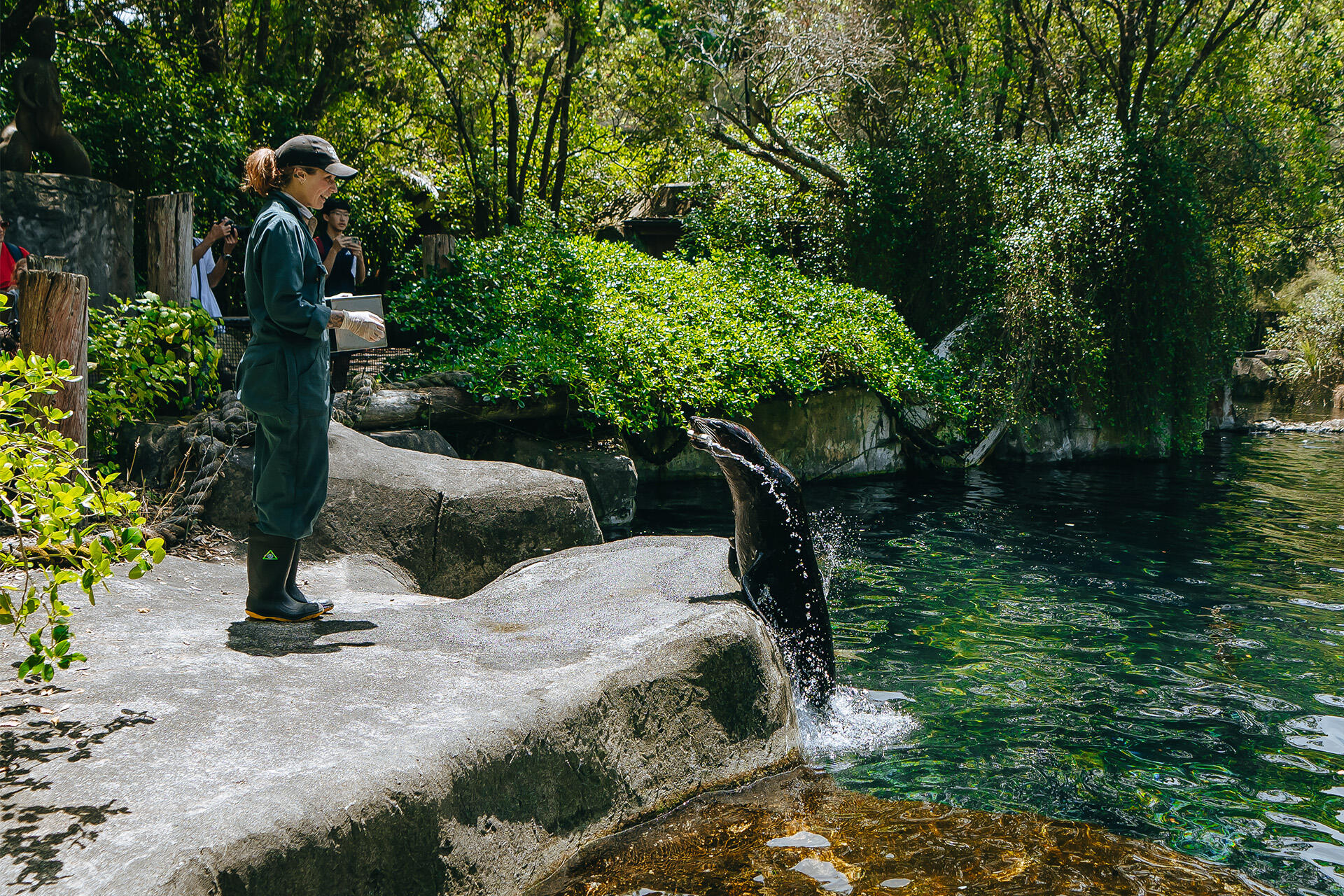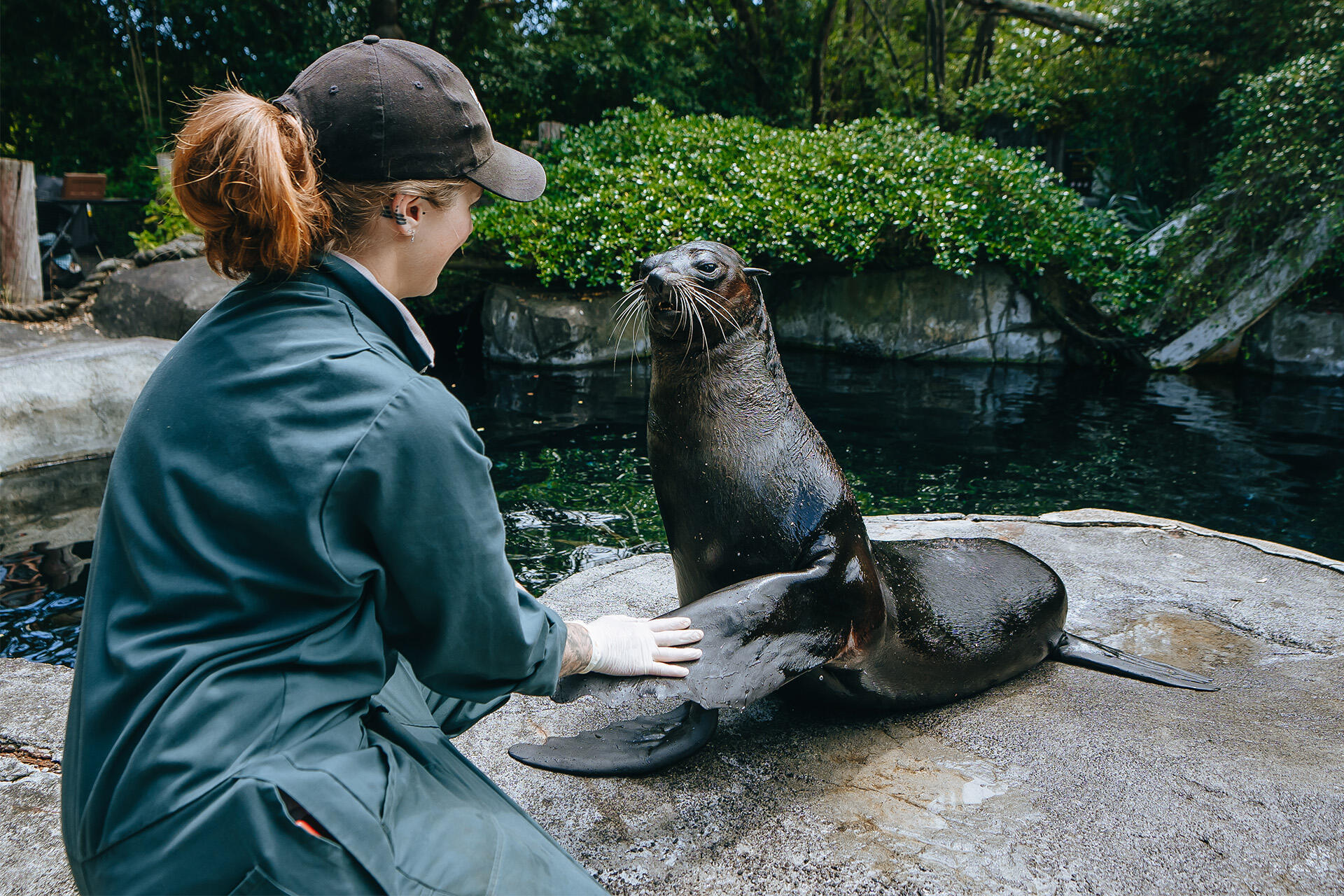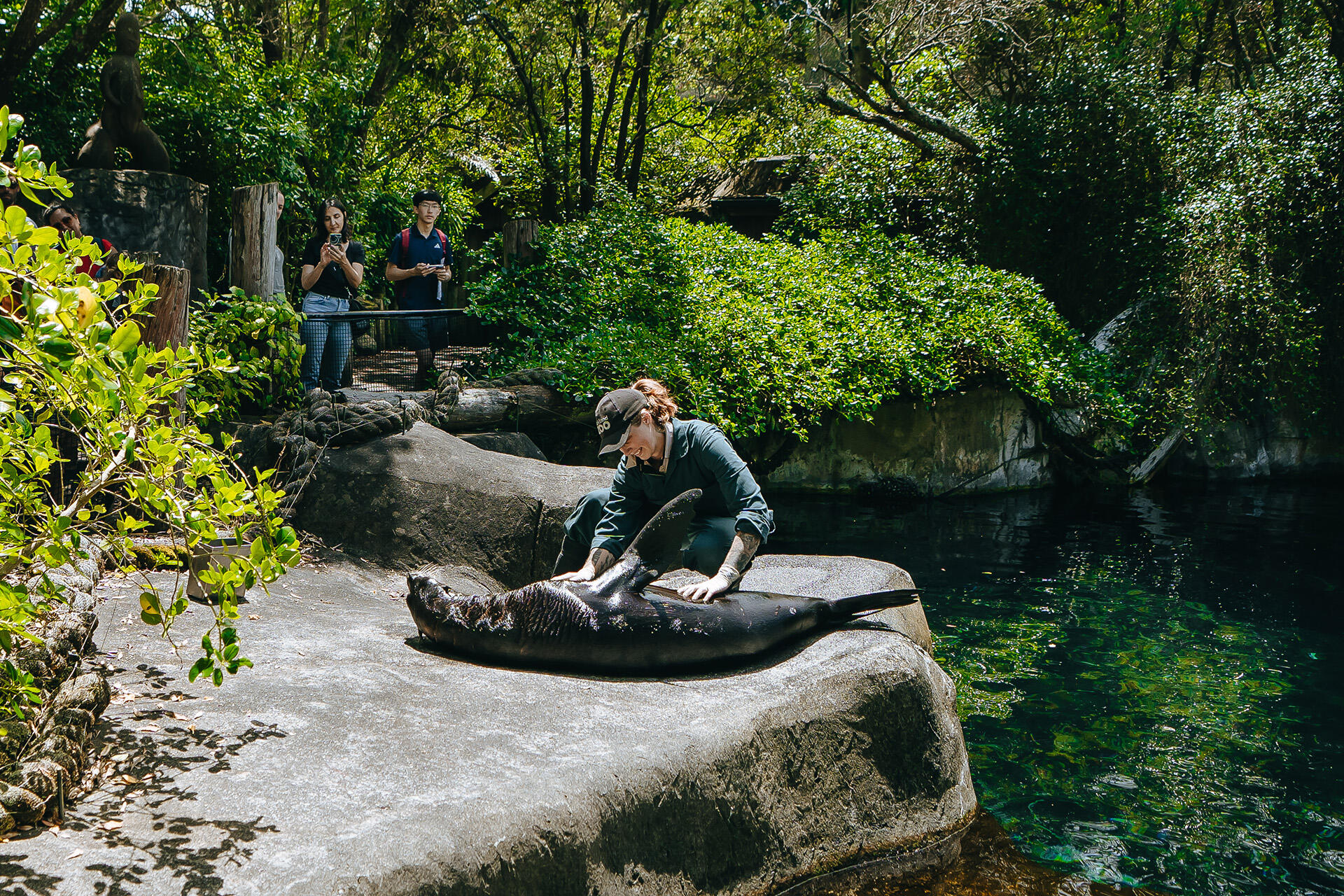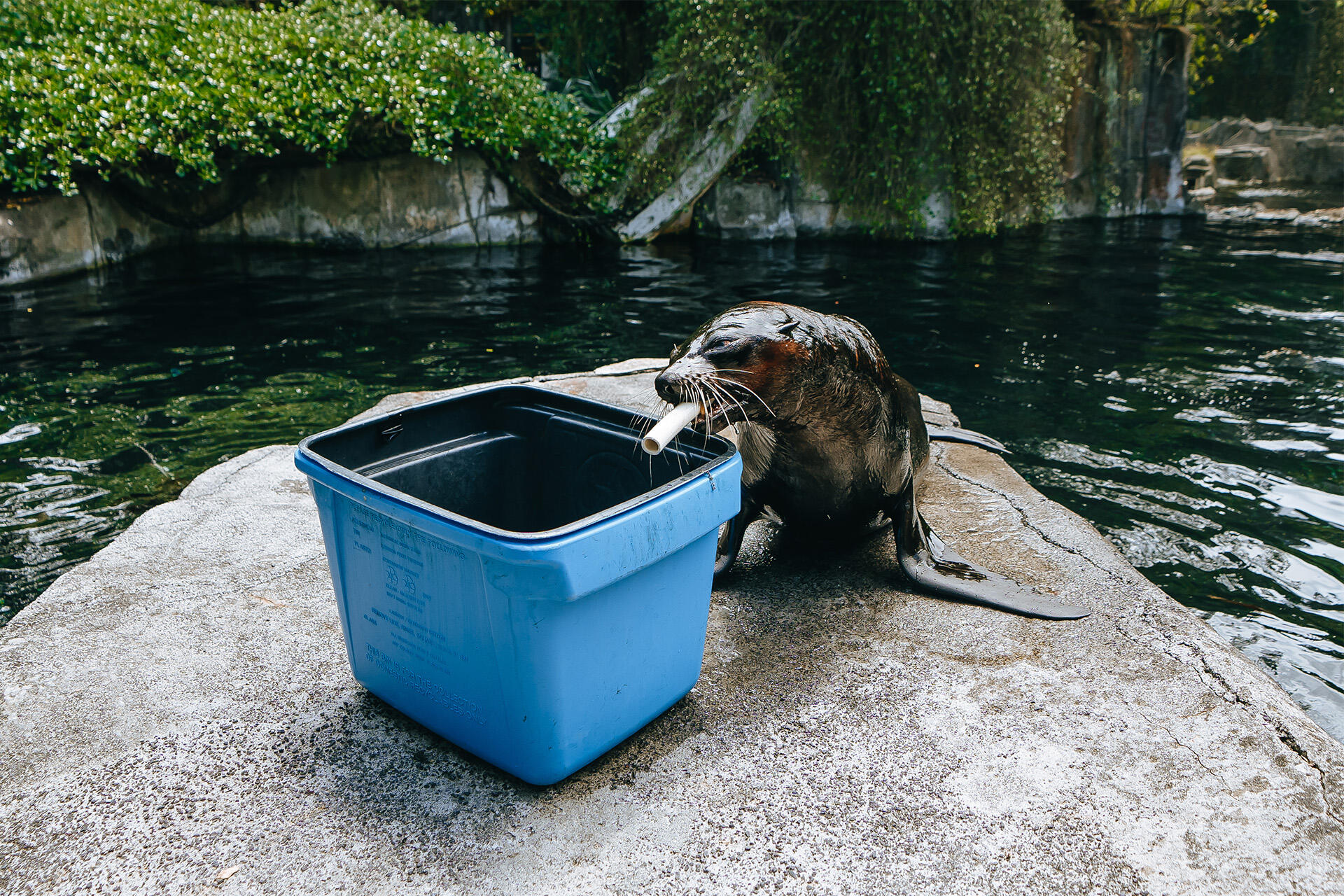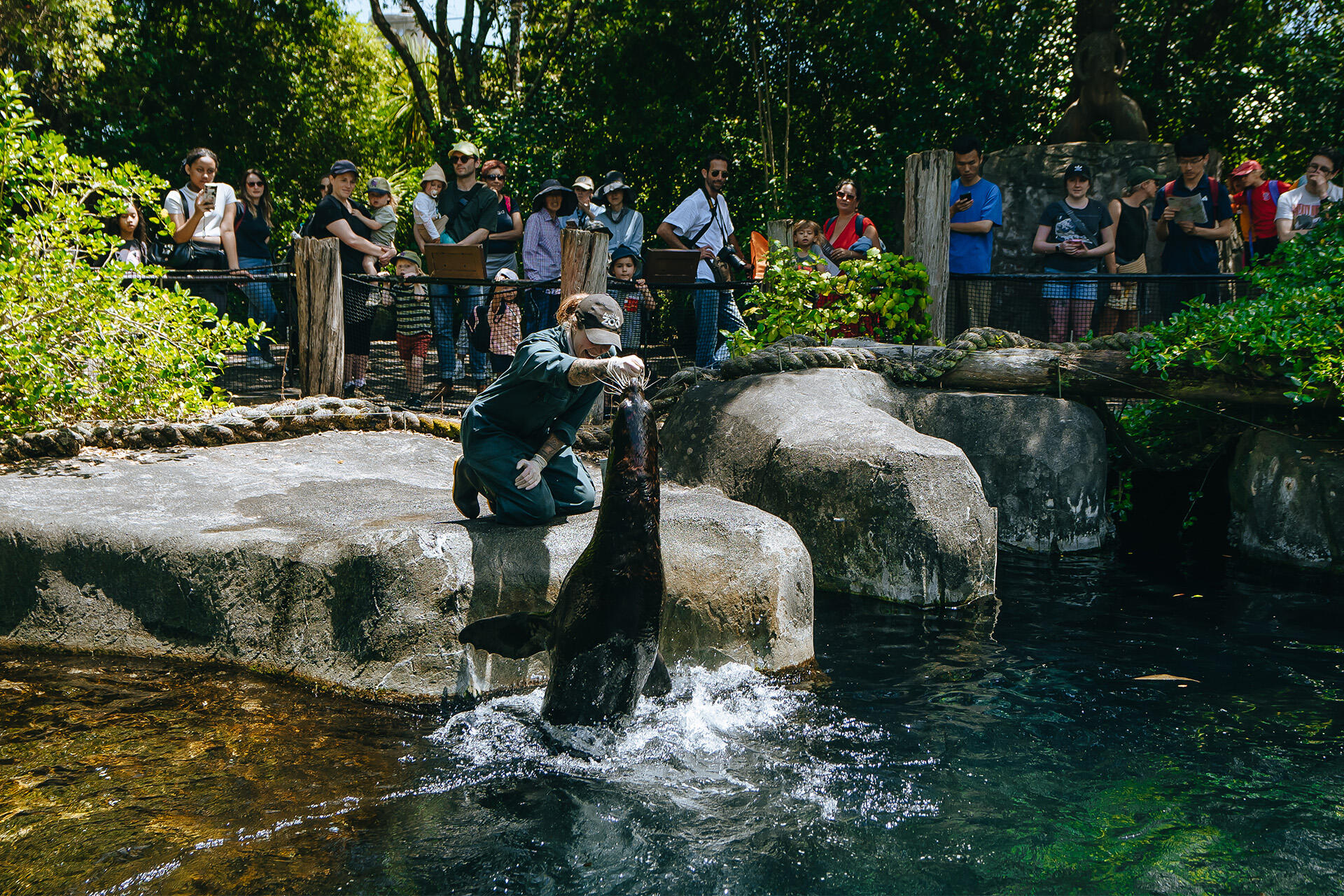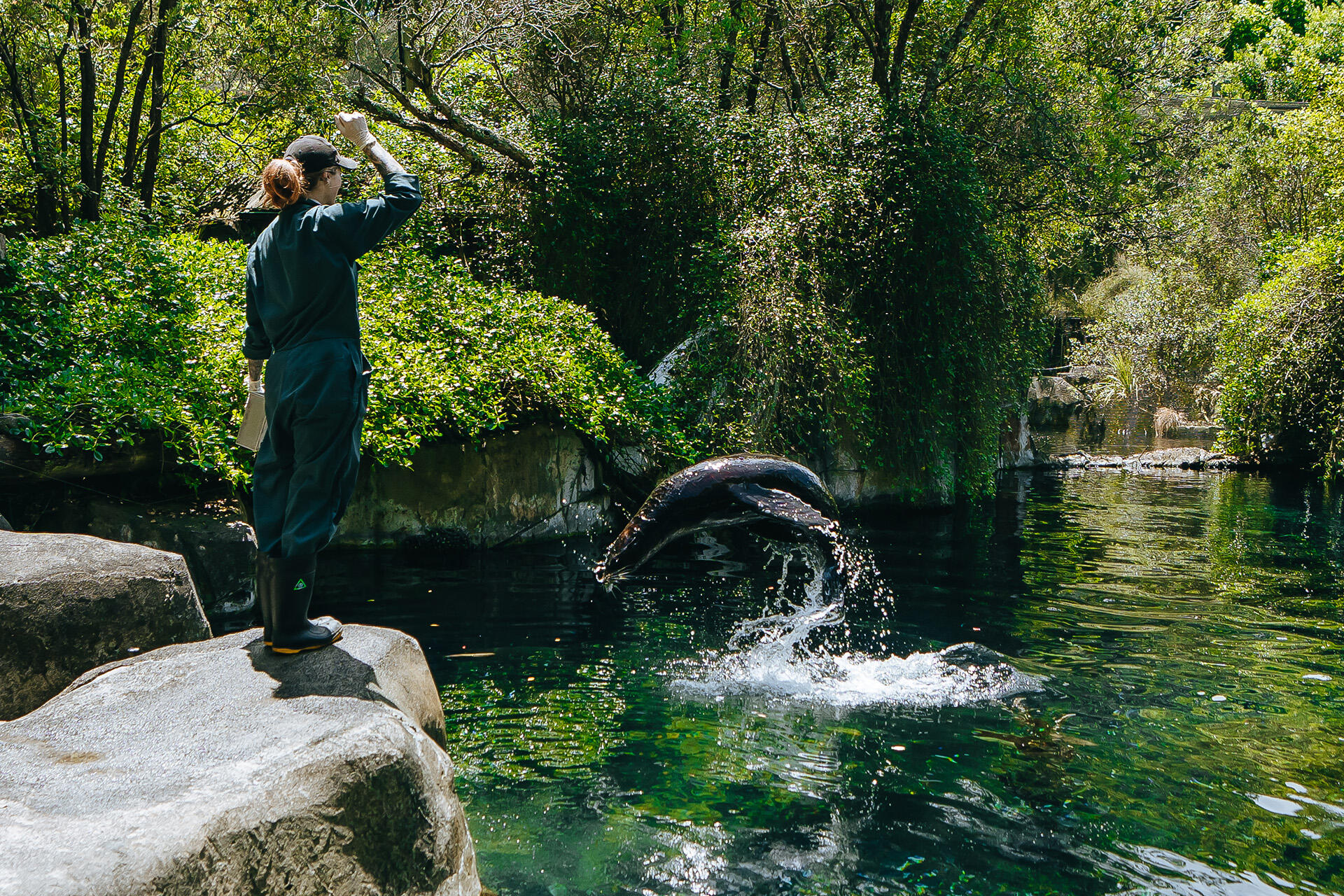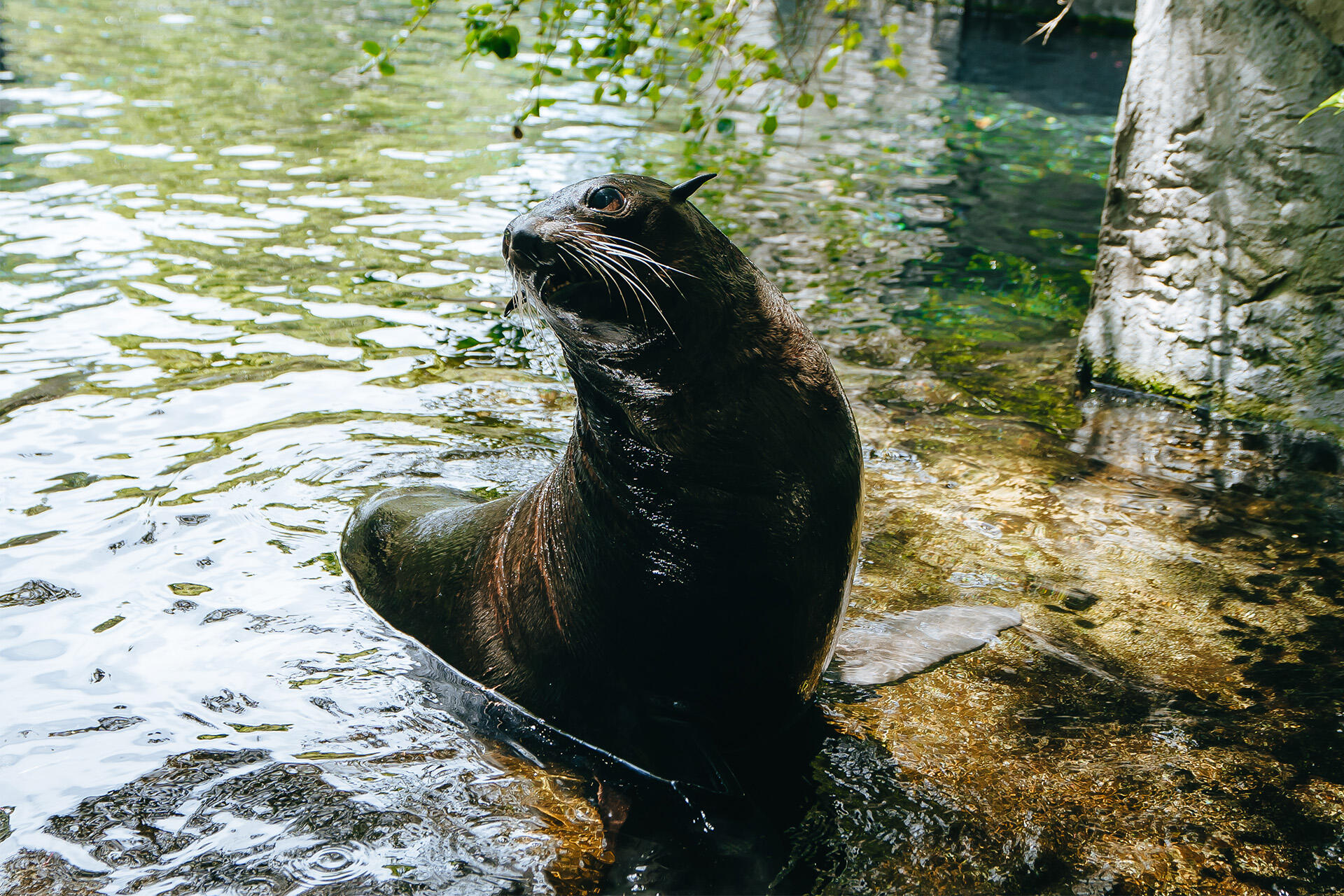If you’ve visited our Takutai (Coast) habitat in Te Wao Nui you may have had the pleasure of observing Subantarctic fur seal Orua gliding impressively at speed underwater. Or seen him basking in the sun on the rock stack at the habitat’s beach.
Now almost 19 years old (upper life expectancy for these seals), Orua came to the Zoo from the wild as an eight-month-old pup in late 2006 after being found washed up at a beach on the Manukau Harbour – way outside his natural range. He was underweight, lethargic and had parasites. Some eight months later it was also discovered he had a cataract in his left eye, significantly impacting his vision.



